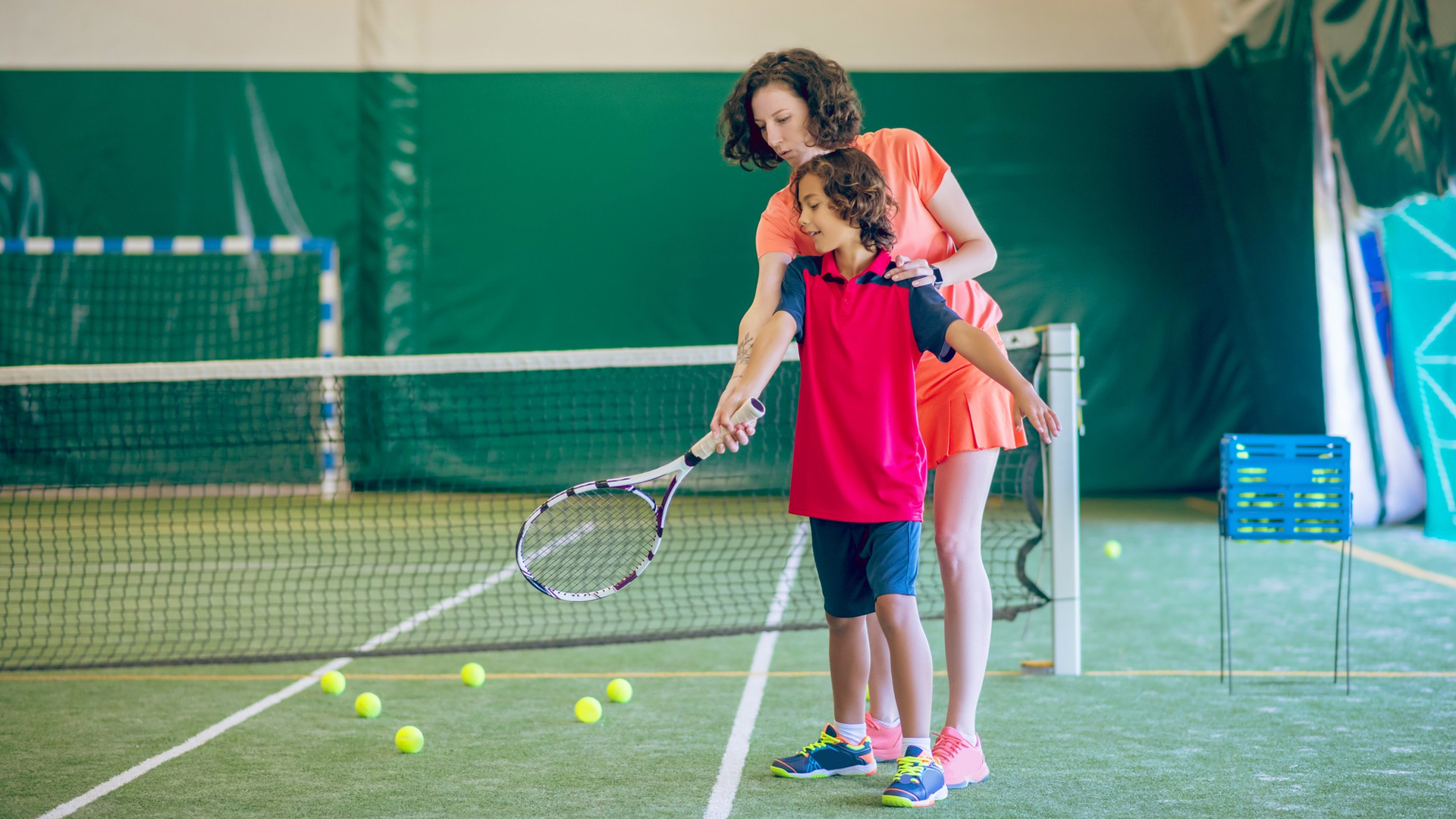Tennis – a game of precision, agility, and strategy – has long been admired for its grace and athleticism. Whether you’re inspired by grand slam champions or simply looking for a fun way to stay active, learning how to play tennis can be a rewarding experience. But if you’re new to the game, it can also feel a bit intimidating at first. Where do you start? How do you develop the skills you need to get better?
The good news is, learning to play tennis is not only achievable, but it can also be incredibly fun and empowering. Whether you’re aiming to play casually with friends or dreaming of competing in tournaments, there’s a path to success for every level of commitment.
In this post, we’ll break down the best ways to learn tennis, from the fundamentals of the game to advanced techniques, so you can step onto the court with confidence and play your best game.
1. Start with the Basics: Understand the Rules of Tennis
Before you even pick up a racket, it’s important to understand the basic rules of tennis. Don’t worry; it’s not as complicated as it might seem! Here are the essential rules every beginner should know:
- The Court: Tennis is typically played on a rectangular court divided by a net. There are singles (one-on-one) and doubles (two-on-two) matches, with different court dimensions for each.
- Scoring: Tennis has a unique scoring system. A match is divided into games, sets, and matches. Games are won by scoring 4 points (15, 30, 40, and game point), sets are usually won by the first player to win 6 games (with at least a 2-game lead), and matches are typically played as best-of-3 or best-of-5 sets.
- Serving: The server starts each point by serving the ball from behind the baseline, alternating sides after each point. The server must ensure the ball lands in the correct service box on the opposite side of the net.
Once you’re comfortable with these basics, you’ll have a better understanding of how the game is played and what to expect when you step onto the court.
2. Get the Right Gear: Invest in Your First Tennis Racket
While tennis is often seen as a sport that requires specific equipment, you don’t need to spend a fortune to get started. However, having the right gear can make a big difference in how comfortable and effective you are on the court.
- Tennis Racket: Choose a racket that suits your skill level. For beginners, look for a lightweight racket with a larger head size for more forgiveness and a bigger sweet spot. A racket with a mid-range balance between power and control is ideal.
- Tennis Shoes: Invest in a good pair of tennis shoes. These are designed to support lateral movements and provide grip on the court, helping to prevent injury.
- Comfortable Clothing: Wear athletic clothing that allows you to move freely—think moisture-wicking fabrics and breathable layers. And don’t forget a good sunhat or sunscreen if you’re playing outdoors!
3. Find a Good Tennis Coach or Take Group Lessons
While tennis is a fun sport you can learn on your own, nothing beats professional guidance when you’re just starting. A coach can teach you the proper techniques, help you avoid bad habits, and accelerate your progress.
- Private Lessons: If you prefer individualized attention, consider hiring a tennis coach for private lessons. These one-on-one sessions can be tailored to your specific needs, whether you want to work on your serve, backhand, or fitness.
- Group Classes: If you prefer a more social environment, group tennis lessons are a great option. Not only will you learn from a professional instructor, but you’ll also get the chance to meet other beginners and practice together.
- Online Coaching: If you’re on a budget or prefer learning at your own pace, there are plenty of online resources, from YouTube tutorials to tennis apps that can guide you through drills and techniques.
4. Master the Fundamental Tennis Strokes
Tennis is all about technique, and mastering the basic strokes is the foundation of your game. The four key strokes you need to learn are:
- The Forehand: This is one of the most common shots in tennis. Start by positioning your feet shoulder-width apart, hold the racket with both hands, and rotate your body as you hit the ball with the front of the racket. Focus on keeping your eye on the ball and hitting it with a smooth follow-through.
- The Backhand: A bit trickier than the forehand, the backhand involves swinging the racket from your opposite side. You can use a one-handed or two-handed backhand, depending on your preference and style. Practice your grip and follow-through to improve power and accuracy.
- The Serve: The serve is crucial for starting each point, and it can be a game-changer when executed correctly. Practice your tossing technique, as it sets the foundation for a strong serve. Start with a simple underhand serve and work your way up to the powerful overhand serve as you improve.
- The Volley: A volley is a shot you make while standing near the net, and it’s all about reflexes. Work on your hand-eye coordination and practice intercepting the ball before it bounces, aiming for a short, controlled shot.
5. Practice, Practice, Practice: Build Your Skills Through Repetition
Tennis is a game of repetition, and the more you practice, the more confident and skilled you’ll become. It’s not just about playing matches; the real progress happens during your practice sessions.
- Solo Drills: If you don’t have a partner, you can still practice your strokes by hitting the ball against a wall or using a tennis ball machine. Focus on your form and aim for consistency, not power.
- Partner Practice: Find a practice partner who is also learning or at a similar skill level. Start by rallying back and forth, focusing on keeping the ball in play. As you improve, add more challenging drills like cross-court shots or practicing your serve returns.
- Conditioning and Fitness: Tennis requires endurance, strength, and agility. Include some fitness training into your routine to build stamina and improve your on-court performance. Cardio, strength training, and agility drills will help you move faster and react quicker during matches.
6. Play Matches and Learn from Experience
The best way to improve is by playing actual matches. Whether it’s against a friend, a fellow beginner, or in a local league, playing matches will teach you how to implement your skills under pressure.
- Start with Friendly Matches: Begin by playing casual games with friends or other beginners. Don’t worry about winning—focus on enjoying the game and practicing your shots in a real setting.
- Join a Tennis League or Club: Once you feel more confident, consider joining a tennis league or club. This will provide you with regular match play, structured lessons, and the opportunity to meet other players at your skill level.
- Learn from Every Match: Win or lose, every match offers a chance to learn. After each game, take a moment to reflect on what went well and what areas you can improve. The more you play, the more you’ll understand the strategic side of the game, such as shot selection, positioning, and reading your opponent’s moves.
7. Stay Consistent and Patient: Tennis Takes Time
The journey to becoming a great tennis player takes time, so be patient with yourself. It’s easy to get frustrated when you don’t see immediate improvement, but every time you step onto the court, you’re building muscle memory and improving your skills.
- Consistency is Key: Whether you’re practicing alone or with a partner, try to play or practice several times a week. Consistency will help you develop the reflexes, coordination, and stamina needed to improve.
- Enjoy the Process: Remember that tennis is meant to be fun! Don’t stress about winning or comparing yourself to others. Celebrate your progress, no matter how small, and keep pushing yourself to improve.
Final Thoughts: Get Ready to Serve Up Success!
Learning to play tennis is a journey that requires patience, practice, and persistence. By starting with the basics, practicing your strokes, and embracing the game’s physical and mental challenges, you’ll find yourself improving in no time. Whether you’re playing for fun, fitness, or competition, tennis is a rewarding and dynamic sport that offers something for everyone.
So grab your racket, head to the court, and start hitting those balls—you’re one step closer to becoming the tennis pro you’ve always wanted to be!





